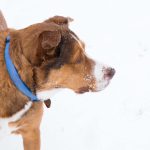Published on June 15, 2018
I rarely think of the tornado. Sometimes, I forget it happened and am reminded by something small: a drizzling rain, the smell of the air in May, Pizza Rolls, a map of Oklahoma, barn swallows. Sometimes I tear my bedroom apart in search of some long-lost possession only to remember that I have not seen it since before the storm, that it is either rotting in a landfill somewhere or buried deep in the woods, having been carried away by the winds. My mom says the sound of wind against the roof still bothers her. My sister, though she would never admit it, is afraid of the storm shelter and refuses to crawl into its depths unless forced. My father, my family’s immovable pillar of strength, gets antsy when the weather channel calls for a storm. I have had anxiety my entire life, but it didn’t bother me much until those years surrounding the tornado. Still, I always forget to mention it to my therapists and doctors. They ask if I’ve ever experienced trauma, and I always tell them I haven’t.
The disaster changed us, but we are all able to continue on with our lives, to forget once in a while that we’d weathered it at all. None of us is traumatized, or so we tell ourselves.
None of us, that is, but Riley.

We adopted Riley when we lived in Washington State and he was just a puppy. We drove out to a mule farm after school one day. My parents told me and my sister that we were going to look at a lawn mower they had seen advertised in the “for sale” section of the newspaper. When we got to the farm, a greying woman in muck boots and dirty jeans led us to the barn and pushed open the door, revealing half a dozen wriggly puppies. Their mother, a red merle Australian Shepherd, doted on them all in turn, licking at their copper fur. Their father, the woman explained, was the neighbor’s dog, some sort of mutt. Looking at Riley now with his big head, stocky muscles, and short hair, we’re pretty sure his father was a pit bull. It doesn’t matter to us, though. He’s our own breed of good boy.
Eighty-five hundred years ago, three dogs were buried in the Illinois River Valley. They are thought to be the oldest archeological examples of domestication in North America, but there are older examples in Europe: at the Bonn-Oberkassel site in Germany, an archeologist uncovered a dog buried alongside two human skeletons. All of these specimens are free of markings associated with hunting, so they weren’t killed by humans or skinned after death. Their skeletons are intact, so nothing scavenged their bodies. It’s obvious that people who cared about these dogs buried them. Though we don’t know exactly why these prehistoric people kept dogs around, we know that they held them at higher regard than other animals.
Humans loved dogs thousands of years ago. Even back then, people were people.
There is only so much room in a storm shelter. I was at work hiding out in the women’s restroom with my coworkers, but my parents and sister were packed into the neighbor’s shelter with three other adults and four very small children. There was barely enough room for all of them, so bringing pets into the shelter wasn’t an option.
As the storm rolled in, my parents corralled our dogs into the laundry room, one of the few rooms in the house without windows. On the news, they always say to go to the innermost room of the house. In dreams, the laundry room is a symbol of the subconscious, of something buried that needs to be cleaned out, cleared away, dealt with in order to move on with life. In reality, it was a tiny room with barely enough room for both of our dogs. There was the little one, our scruffy, long-legged, sad excuse for a Yorkshire Terrier. We joke that, although he is purebred, he looks more like a shelter dog on one of those sappy ASPCA commercials. When he’s looking his roughest, I sometimes make a show of cradling him against my chest and singing my best imitation of Sarah McLachlan’s “In The Arms of The Angel.” He’s intelligent in the way that an evil genius is intelligent, but only when it benefits him; he spends his days pulling tricks on my poor parents, barking at the door when no one is there in hope that my dad will drop his plate of food and answer it. When he is not being devious, he is being a doofus.
Then, there’s the big dog, Riley. It broke my mom’s heart to leave him in the house. I know because the moment she opened the shelter door and saw the wreckage of her former home, she called out for him. She screamed his name and sobbed. My dad ran into what was left of the house and let the dogs out – both miraculously alive – and Riley ran directly into my mom’s arms.

We don’t know exactly how long ago dogs branched away from wolves in the evolutionary tree, and we don’t know whether or not humans had anything to do with it. We know that they got smaller, their bone structure changed, and they started living alongside humans. Many credit this last change with the similarities between human and canine lifestyles: we’re both pack animals. Prehistoric peoples lived in nomadic groups, as did early dogs. They fit seamlessly into the human family dynamic.
If a tornado tears through a home but doesn’t finish the job – that is, completely level the place – the smoke alarms will go off. And they will keep going off indefinitely, in each house in the neighborhood, not in sync, but just staggered enough that their off-beat screeching will drive a person crazy.
It drove my mother crazy.
A few days into the post-disaster cleanup, my mom took a ballpeen hammer and a stepstool through what was left of the house and destroyed every last smoke alarm. With one hand on the ceiling and the other gripping her weapon, she swung at them mercilessly until their wailing came to an end. Then, she did the same in every other house in earshot. When she was done, the air was still and silent. She could survey the wreckage of her material life in quiet, though perhaps not in peace.
The dogs were in the house that day. We had nowhere else to put them. We put up a child gate in the master bathroom, and we kept them there while we picked through broken glass, insulation, roof tiles, and wet clothes. The dogs cried the entire time.
Some dog trainers, like the infamous Cesar Millan, are still looking at that bend in the evolutionary tree where wolf became dog. According to Cesar’s method – or “Cesar’s Way” as it is called on his show The Dog Whisperer – an owner needs to act as the alpha dog or “Pack Leader” to ensure obedience. This means everything from exuding a dominant energy to using his hand to mock-bite a dog that is out of line. When a dog is nervous or out-of-line, you don’t coddle, you ignore. Cesar bases his self-taught technique entirely on the principle of being a “calm and assertive Pack Leader,” a skill that he supposedly learned by observing wolves.
My mom cannot watch Grey’s Anatomy anymore. Every time an extra starts coding, that fictional hospital breaks out in a chorus of beeps. By the time the first commercial break rolls around, my mom has a seventy-pound dog in her lap.
Using the pressure cooker is an ordeal. It beeps when you turn it on. It beeps when you set the timer. It beeps when the mashed potatoes are done. The little dog knows that the beeping means food. Riley still thinks the beeping means danger.
He can hear the beeping of the microwave in my apartment over the phone. I have to pause the conversation with my mom and mute the phone before heating up my leftovers. If I don’t, the other end of the line erupts in panicked barking and my mom’s frustrated yelling.
“Don’t coddle him,” my mom says whenever one of us finds ourselves lovingly crushed under Riley’s weight. “You’re just encouraging it.”
When she’s not watching, though, I pet him anyway. I hold him tight. I tell him he’s a good boy, because he is. I treat him as I’d like to be treated if I were to have a similar episode, because I have.
Cesar’s Way, as it turns out, is not the way. The entire foundation of using aggression to scare a dog into submission is based on a study on unrelated captive wolves in the 1940s. Wolf experts today will tell you that a wolf pack in the wild is not a randomly-assembled group but a family, with the mother and father acting as alpha and their offspring following their lead. There is no violent clamber to the top.
And so it should be with dogs. Canine behaviorists who have come forth in opposition to Cesar call his techniques abusive. They say that positive punishment – punishing an animal when they exhibit a negative behavior – doesn’t teach the dog a lesson. Instead, it makes them shut down and isolate themselves. They become uncertain and afraid. Scared dogs act very similarly to aggressive dogs: they snarl, they bite, and they distrust their owners.
We call them “the boys.” When I talk to my parents, I ask them what the boys are up to. On a particularly rough day, I might ask my mom to send me a photo of the boys. Every night at 10:30, my dad says, in the exact same cadence, “Okay, boys. Let’s go potty so we can go to bed.”
I cannot separate them from the other members of my family. To me, Riley will always be a little brother. He will always be the scared puppy we drove home from the mule farm, the one we caught frogs with, the one who dipped his nose into the lake and blew bubbles over the side of our fishing boat. When I see him, I do not see an animal. When I see a wolf, I do not see Riley.
Perhaps it’s hypocritical to make such a distinction. I consider him to be a higher plane of existence than the deer I see on the side of the road or the crows that pester our little dog in the backyard. I can eat venison without remorse, but I nearly burst into tears when I accidentally step on the little dog’s foot. I tell myself there is a difference, that my dogs have something in them that wild animals do not, some shred of humanity or personhood. Scientifically, I know I’m wrong. Spiritually, I can’t help but believe it.
In recent years, it has become apparent that humans and animals share more than we previously thought, including mental illness. From cats in warzones to abused horses to military dogs, there is more and more proof that animals suffer from PTSD. They are tense and jumpy. They avoid people. They shake. Sometimes, they lash out.
We have known for years that we share mental illness with other primates. Jane Goodall herself documented a case in which a chimpanzee became depressed after its mother died. The young chimp stopped eating, then stopped moving, then died of heartbreak lying where its mother had died just a few days earlier.
Jane Goodall was also the first to document chimpanzees using twigs as tools to hunt termites, an observation that has changed the field of primatology and also how we define our own species. Until then, we classified humans as separate from the great apes because we were the only known toolmakers. When Jane wrote of her findings to Louis Leaky, a famed Kenyan paleoanthropologist, he replied, “Now we must redefine tool, redefine Man, or accept chimpanzees as humans.”
It makes me wonder how much of ourselves exist in animals. It makes me wonder where we should draw the line between us and them, if there is even a line at all.
My mom wants to make me and my sister each a weighted blanket. They are exactly what they sound like. They’re supposed to help with anxiety, she says. She knows I haven’t been sleeping well for months. I spend most nights dozing fitfully between nightmares. The anxiety had been dormant for years, but it shook itself awake when I was a teenager. Since then, it has evolved into full-blown obsessive-compulsive disorder. When I talk to my psychiatrist, I use Elizabeth Gilbert’s metaphor from her book Big Magic—I tell her that the OCD is a herding dog and my head is a one-bedroom apartment; if I don’t give it something to do, something to wear it out, it’s going to tear up the couch.
When things get bad, when it seems less and less likely that I’ll make it through the day without a meltdown or panic attack, I call my mom. I ask her what my boys are up to, listen to them grumble and growl as they wrestle on the living room floor. I make her tell Riley that I love him, and, though I can practically hear her rolling her eyes, she always does.
My mom got the idea for the blankets from Riley. A few years ago, she bought him a specially designed shirt made of elastic material and strips of Velcro. Whenever a storm rolls in, one of us wraps the shirt around him as tightly as we can without constricting him. It is supposed to mimic the feeling of being held. I think it works, because every time I ask Riley if he wants to put on his shirt, he leads me to the laundry room where it hangs on a hook next to his leash.
I told my mom I’d try the weighted blanket. If it’s good enough for Riley, it’s good enough for me.

Alyssa Gregory is a senior English and Digital Storytelling major from Newalla, OK. Her creative writing has been featured in EPIC Literary Magazine, where she now serves as Nonfiction Editor. Besides writing, Alyssa also creates video art, which she has shown in galleries in Columbia and across the state.